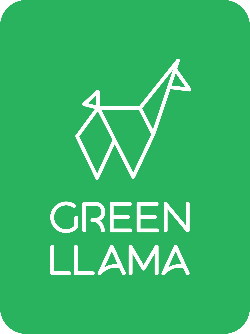The "Eco-Tax": Is Sustainable Living Actually More Expensive?
by Kay Baker on Sep 24, 2025
The "Eco‑Tax": Is Sustainable Living Actually More Expensive?
Written by: Kay Baker, MS, OTR/L — CEO & Co‑Founder • Reviewed by: Matthew Keasey, Ph.D. — Chief Science Officer • Last reviewed:
You’ve done it. You’ve decided to make a change. You walk into a store, find the eco-friendly section, and pick up a product. You turn it over, check the price tag, and… ouch.
You’re hit with the “eco-tax.” That’s the term for the premium price that often comes with products making sustainable claims. It can feel like you’re being penalized for trying to do the right thing, and the immediate thought is often, “I can’t afford this.”
It’s a valid concern. When you’re managing a household budget, every dollar counts. But what if we’ve been looking at the cost all wrong? What if the cheaper, conventional product actually costs you more in the long run?
Let’s do the real math—not just the price on the sticker, but the hidden costs and long-term value.
The Upfront Cost vs. The Lifetime Cost
The biggest mental shift is moving from thinking about a product's one-time cost to its lifetime value. Many conventional products are cheap because they are designed to be disposable. You have to buy them over, and over, and over again.
Sustainable products, on the other hand, are often designed as reusable systems. They may have a higher upfront cost, but they save you money over time by eliminating the need for constant repurchasing.
Let's look at a few examples:
The Safety Razor:
Upfront Cost: A high-quality stainless steel safety razor might cost you $30.
Conventional Cost: A pack of 4 disposable cartridge refills can be $15+.
The Real Math: A pack of 100 replacement blades for a safety razor costs about $10 and can last for years. After the initial investment, your cost for shaving drops to almost zero.
The Reusable Coffee Cup:
Upfront Cost: A good travel mug costs around $25.
Conventional Cost: That daily $5 latte.
The Real Math: If you make coffee at home just twice a week instead of buying it, your reusable mug pays for itself in less than a month. Many coffee shops also offer a discount (around $0.10-$0.25) for bringing your own cup, adding to your savings over time.
See the pattern? You pay a little more once to save a lot, forever.
The Cleaning Aisle Calculation: Where You Really Save Big
Now, let's bring it back to that cleaning aisle. It’s one of the places where the disposable model is most obvious. You buy a plastic bottle of cleaner. It runs out. You throw it away (or, let's be honest, wish-cycle it) and buy another one.
Most of what you’re buying in that bottle is water. You’re paying for the plastic, the label, and the cost of shipping water across the country.
This is where a refill system completely changes the game.
Let’s do a real-world cost breakdown with our Green Llama All-Purpose Cleaner:
- Conventional Cleaner: A 16oz bottle of a popular "natural" cleaner costs about $4.00 - $8.00. You use it, you toss it.
- Green Llama Starter Kit: You buy one beautiful glass bottle with a tablet for $12.95.
- Green Llama Refills: A pack of 3 refill tablets costs $7.95. That works out to $2.48 per tablet.
So, your first bottle costs a bit more. But your second, third, fourth, and hundredth bottle? They only cost you $2.50-$2.95. You've cut your long-term cleaning cost by 50-65% while completely eliminating plastic waste.
When you stop buying the water and the plastic, you realize that a powerful, non-toxic clean is actually incredibly affordable.
The Costs You Can't See on a Price Tag
And then there are the costs that don't show up on a receipt.
The Cost to Your Health: What is the long-term cost of breathing in harsh chemical fumes every day? The potential health impacts from endocrine-disrupting chemicals hidden in fragrances are real, even if they're not immediate.
The Cost to the Planet: What is the true cost of a plastic bottle that takes 450 years to break down, leaching microplastics into our soil and water?
When you choose a product with safe, non-toxic ingredients and zero-waste packaging, you’re not just buying a cleaner. You’re making an investment in your family’s long-term health and the future of our planet. And that’s a return on investment you can’t put a price on.
The next time you see that "eco-tax," reframe it. Ask yourself: Is this an expense, or is this a smart investment? Often, you'll find that choosing sustainably is the most frugal decision you can make.





